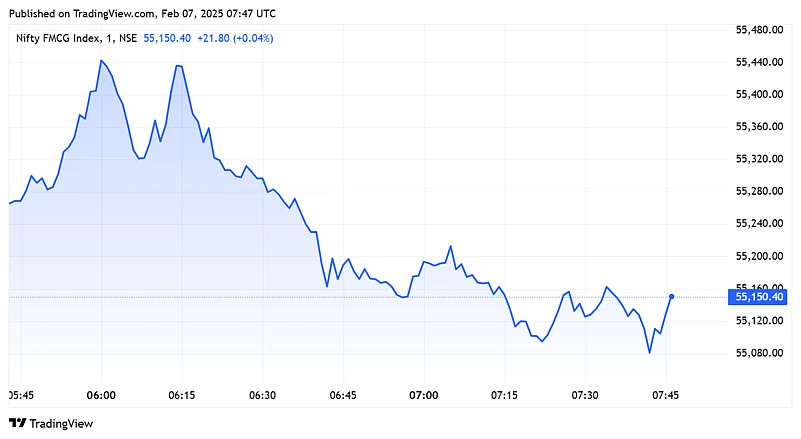RBI MPC, Markets Down: Even as the recent decision of 25 bps (basis points) rate cut by RBI was largely in-line with D-street expectations, it failed to cheer investors. Benchmark indices, Sensex and Nifty, remained range bound.
"With no surprises or aggressive forward guidance on further easing, investors found little reason for fresh optimism," said Sonam Srivastava- founder and fund manager at Wright Research PMS. Interestingly, the FMCG sector, after surging by over 3% last week, was among the worst-performing sectoral indices. On Friday, Nifty FMCG plummeted by over 600 points post the rate-cut announcement.

At 12:45, BSE Sensex was trading at 77,925.41, down by 1.7%. Similarly, NSE Nifty remained range-bound and was trading below 23,600 level.
More than domestic cues, it was actually the global economic uncertainty that dampened market sentiment, as per analysts. Plus, the Federal Reserve's recent comment that they’re in no rush to cut rates has only added to the confusion of D-street investors, making the outlook more blurry.
"Concerns about global economic uncertainty and foreign fund outflows have weighed on sentiment. The global rate cycle remains a key concern, with investors closely watching policy stances from the US Federal Reserve and other major central banks," Srivastava added.
Amidst global factors playing in the background, the good old 'wait and watch' banner remains on top for D-Street investors.
Wait-&-Watch banner still up
After the Union Budget provided the much-needed relief by revising tax slabs to boost demand, all eyes were on the RBI’s key interest rate decision. India Inc.’s rough quarter had triggered downgrades, dragging down investor mood. Thus, a demand push, alongside a boost in liquidity, was just what everyone was hoping for in the MPC's interest rate announcement.
But Trump’s tariff move is making things trickier. Trade wars rarely end well for anyone as it only has losers. Besides, the US is the only major trade partner where India runs a surplus. Any new tariffs could hurt domestic exports and put more strain on the already struggling rupee.
So, investor indecisiveness amid all these factors playing out in the background, is justified at some level. The central bank has also kept its stance 'Neutral', keeping enough headroom for prospective adjustments to be implemented in future.
"We believe with respect to the stance status, markets traded volatile but with respect to the trend in change of interest rates, it gives a signal for more rate cuts in the coming year. We remain constructive as GDP growth is expected to grow at 6.7% and we could see the markets moving upwards to 24,000 levels over the next few weeks," Vikas Jain, head of research at Reliance Securities said.
More cuts in sight?
Even as pressure on the domestic currency remains high, D-street analysts are hoping for more rate cuts in the upcoming MPC meets. This is largely owing to easing inflation that declined to a 4-month low of 5.22% in December month. Meanwhile, core inflation is already below 4%.
Yes Securities anticipates 2 to 3 rate cuts in FY26, citing RBI’s flexible monetary approach. The brokerage firm expects a 50-75 bps cut in the next fiscal while keeping real interest rates between 1.25% and 1.5%.
However, overall inflation still remains above the central bank's threshold and monetary easing alone is insufficient to drive a strong economic turnaround. Structural reforms, fiscal measures and sustained credit growth will be necessary to support corporate profitability and consumption demand, as per D-street analysts.
"Investors had been hoping for a more dovish signal, but the cautious outlook suggests the central bank remains vigilant about inflationary pressures, limiting the scope for aggressive monetary easing in the near future," said Srivastava.
This is partly the reason why equity benchmark indices have remained highly volatile as investors are cautiously calculating the impact of the first 25 bps rate cut in the last 5 years. "Markets have remained tepid, digesting the announcement within the broader macroeconomic context rather than reacting with enthusiasm," she said.
































